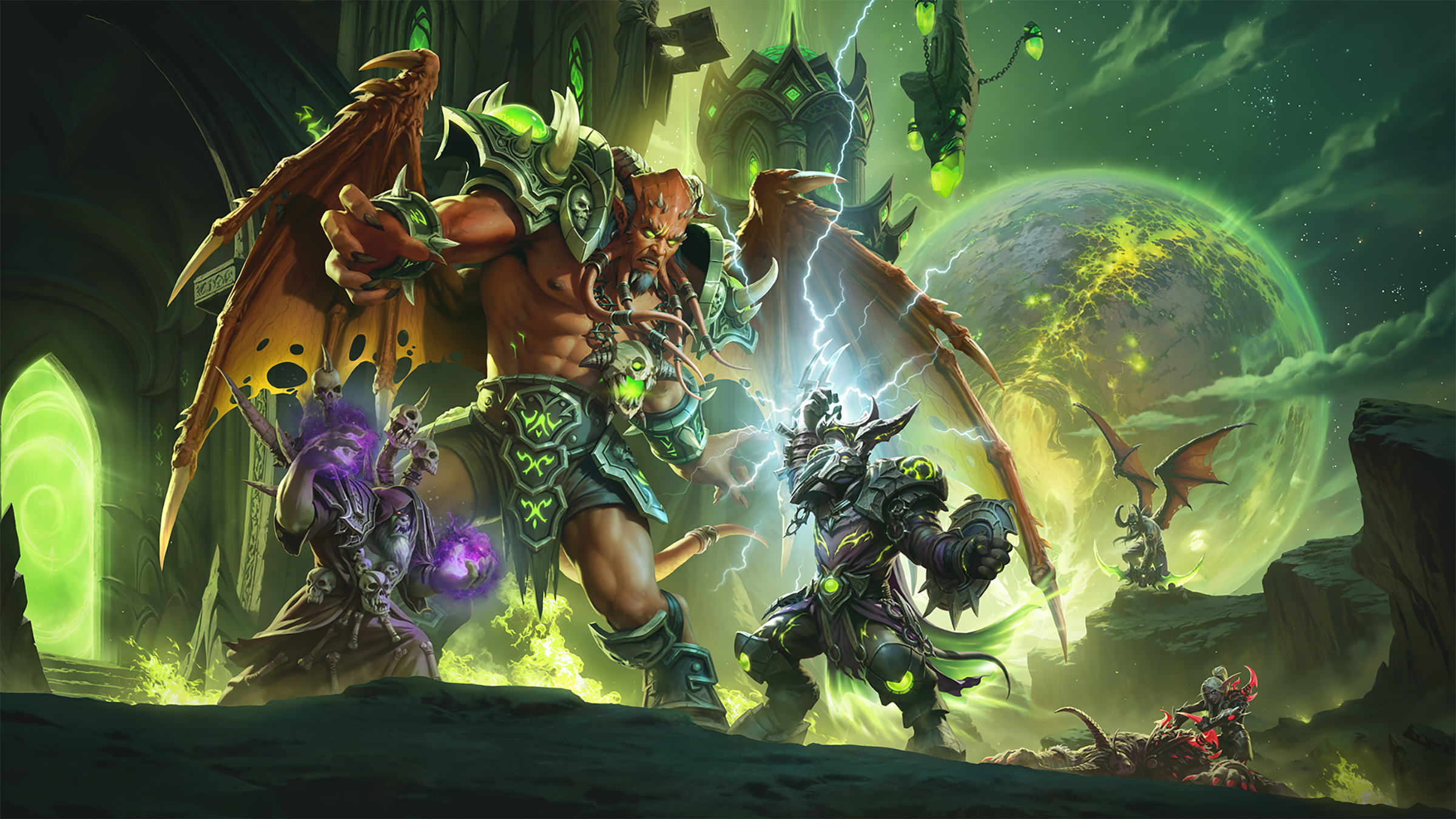World of Warcraft: Midnight’s Controversial Move to Disable Combat Addons Sparks Community Uproar and Reinvents Raid Design
Popular Now
 PUBG Mobile
PUBG Mobile
 BeamNG.drive
BeamNG.drive
 Toca Boca World
Toca Boca World
 Brawl Stars
Brawl Stars
 Sonic the Hedgehog™ Classic
Sonic the Hedgehog™ Classic
 Genshin Impact
Genshin Impact
 FIFA 23
FIFA 23
 Fall Guys
Fall Guys
 League of Legends
League of Legends
 Garena Free Fire: Kalahari
Garena Free Fire: Kalahari 
The announcement from Blizzard Entertainment regarding the upcoming World of Warcraft: Midnight expansion has sent shockwaves through the community, particularly among high-end raiders and Mythic+ enthusiasts. The core of the controversy centers on a fundamental shift in game design: the significant—and in some cases, outright removal—of the ability for third-party add-ons to access real-time combat data. This decision directly targets and effectively “kills” arguably the most powerful and widely-used add-on in the game’s history: WeakAuras.
This aggressive move is part of Blizzard’s larger, long-term philosophy to improve game accessibility and move away from a development cycle where endgame content is balanced around the mandatory use of external tools. For decades, players have relied on combat-assisting add-ons to master complex mechanics, leading to a situation often described as an “add-on arms race” between the developers and the player base. Now, that cycle is set to be broken.
The Target: WeakAuras and the Erosion of Core Functionality
While many add-ons like Deadly Boss Mods (DBM), BigWigs, and damage meters like Details! will be heavily impacted, WeakAuras has been singled out as the most critical loss. For millions of players, WeakAuras is more than just a mod; it is a highly customizable framework capable of displaying intricate visual and auditory cues for everything from simple ability cooldowns to highly-specific, encounter-breaking boss mechanics. The sheer flexibility of WeakAuras made it an indispensable tool for maximizing DPS, managing tank cooldowns, and mastering healer rotation—often trivializing mechanics that were intended to be visually complex.
The developers of WeakAuras have themselves indicated that the restrictions implemented in the Midnight Alpha are so severe that core components, such as multi-trigger logic and conditional actions, are now impossible. This has led to the difficult decision by the WeakAuras team to cease development for the Midnight expansion, stating that a stripped-down version would be “barely recognizable.”
- API Restriction: The core change involves the combat API (Application Programming Interface) being moved from a public-access data stream to a restricted, private “black box.” Add-ons will no longer be able to read real-time combat event data, effectively blinding them to critical information like specific boss abilities, buff/debuff states, and proc events.
- Affected Functionality: The impact is far-reaching. It is expected to entirely disable real-time combat warning systems (DBM/BigWigs), prevent accurate resource and cooldown tracking, and stop logging add-ons from recording combat data.
- Player Sentiment: The community response is polarized. Supporters view it as a much-needed step to restore the challenge of MMO raid design and make the base game more enjoyable without external downloads. Opponents lament the loss of personalization, accessibility features (which WeakAuras also provided), and the fear that Blizzard’s in-house replacements will be insufficient.
 Blizzard’s New Direction: Accessibility and In-House Replacements
Blizzard’s New Direction: Accessibility and In-House Replacements
Blizzard’s stated goal is not to punish players but to create a more level playing field and shift the focus back to mechanical execution rather than external information processing. The move is paired with two major internal development efforts:
- Class Simplification: The developers are actively streamlining class specializations, aiming to reduce the number of necessary abilities and make rotations more intuitive. This reduction in complexity is designed to alleviate the pressure of having to use sophisticated rotation helper add-ons to achieve competitive performance.
- Built-in UI Improvements: A significant overhaul of the default User Interface (UI) is ongoing, with features previously offered only by add-ons being baked directly into the game. Blizzard has confirmed the integration of a base damage meter and is working on robust, in-house solutions for boss alerts and cooldown tracking that will be visible through the default UI.
However, the skepticism remains high. Many seasoned players doubt that Blizzard can adequately replace the depth, customization, and utility that community-driven add-ons have offered over the last two decades. The key concern, voiced by many in the alpha testing phase and various Reddit threads, is that the official tools, while functional, lack the flexibility for individual optimization that competitive play demands. The community argues that the developer’s approach of “rip the band-aid off” by disabling the APIs first, and then promising a solution, is a risky strategy that could alienate its most dedicated endgame players.
The Business and Design Implications of the Combat Addon Purge
The decision to fundamentally alter the addon ecosystem carries significant implications for the future of World of Warcraft as a competitive MMORPG.
The primary driver is an effort to reclaim the integrity of encounter design. Blizzard has acknowledged that past boss fights were created under the implicit understanding that add-ons would be used to solve them. By closing off the combat API, designers can now create mechanics that demand genuine player observation, spatial awareness, and real-time decision-making, rather than simply following a screen prompt generated by a sophisticated community script.
Furthermore, the shift aligns with a broader industry trend toward a more integrated, default gaming experience. The goal is to lower the barrier to entry for new and returning players who may be intimidated by the dozens of mandatory add-ons required to join a high-level Mythic+ or raid progression group. This focus on gaming accessibility and a clearer, more legible interface is critical for the long-term health of the WoW subscriber base.
What This Means for the Future of WoW Gameplay and Content
As the Midnight pre-patch approaches, the community is bracing for what will undoubtedly be a jarring period of adjustment. The “great purge” of combat mods is a pivotal moment that will force a drastic change in how the game is played:
- Increased Difficulty: Initial encounters are expected to feel significantly more challenging, even with tuning passes, as players relearn how to react to mechanics without detailed external timers and notifications.
- Focus on Core Skills: Player skill will pivot away from add-on management and back toward mastery of class rotations, visual cue recognition, and effective communication. This could revitalize the “human element” of complex encounters.
- New Competitive Landscape: The competitive Race to World First will be irrevocably changed. Top-tier guilds will no longer rely on dedicated WeakAura creators to solve fights instantly. Instead, success will hinge more purely on mechanical execution and swift in-game adaptation.
- Quality of Life Concerns: Many quality-of-life (QoL) WeakAuras unrelated to combat, such as those that manage inventory, track resources outside of combat, or assist with questing, also face a precarious future due to the broad nature of the API restrictions. Blizzard has made some concessions in this area, but the full impact is yet to be determined.
The bold, divisive changes coming with World of Warcraft: Midnight are a high-stakes gamble for Blizzard. While the intent to create a more accessible and internally balanced game is commendable, the execution—particularly the sudden and dramatic restriction of key APIs—has left a chasm of uncertainty in the community. The coming months will reveal whether this is the visionary move that revitalizes Blizzard’s MMORPG or a misstep that alienates its most engaged and high-spending customers.
For players preparing for WoW Midnight, the advice is clear: begin the process of unlearning old habits. The reliance on external tools is ending. The next chapter of Azeroth demands a return to fundamental gameplay skills. The market for WoW Gold and Mythic+ carry services will certainly see volatility as the competitive meta is completely redefined. The cost of WoW boosting and other premium services may shift dramatically based on how well the new default UI supports high-level play.
The era of the all-powerful combat add-on is over. The era of Blizzard’s vision for World of Warcraft is about to begin. The question remains: can the in-house toolkit truly fill the void left by a community-driven powerhouse like WeakAuras?
 SEO & Game Review Keywords:
SEO & Game Review Keywords:
Primary Keywords: World of Warcraft: Midnight, WeakAuras, WoW Addons, Combat Addons, WoW Endgame.
High CPC & Secondary Keywords: MMO Raid Design, Game Accessibility, UI Overhaul, Deadly Boss Mods (DBM), Mythic+ Progression, WoW Subscriber Base, DPS Optimization, Blizzard Entertainment, WoW Boosting, WoW Gold, API Restriction, Competitive MMORPG.









 Blizzard’s New Direction: Accessibility and In-House Replacements
Blizzard’s New Direction: Accessibility and In-House Replacements SEO & Game Review Keywords:
SEO & Game Review Keywords: